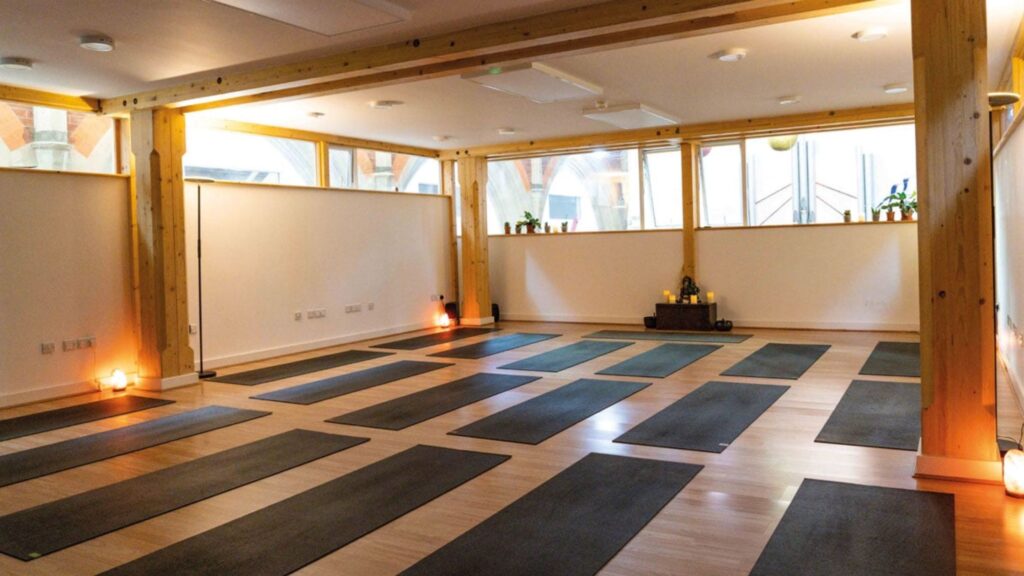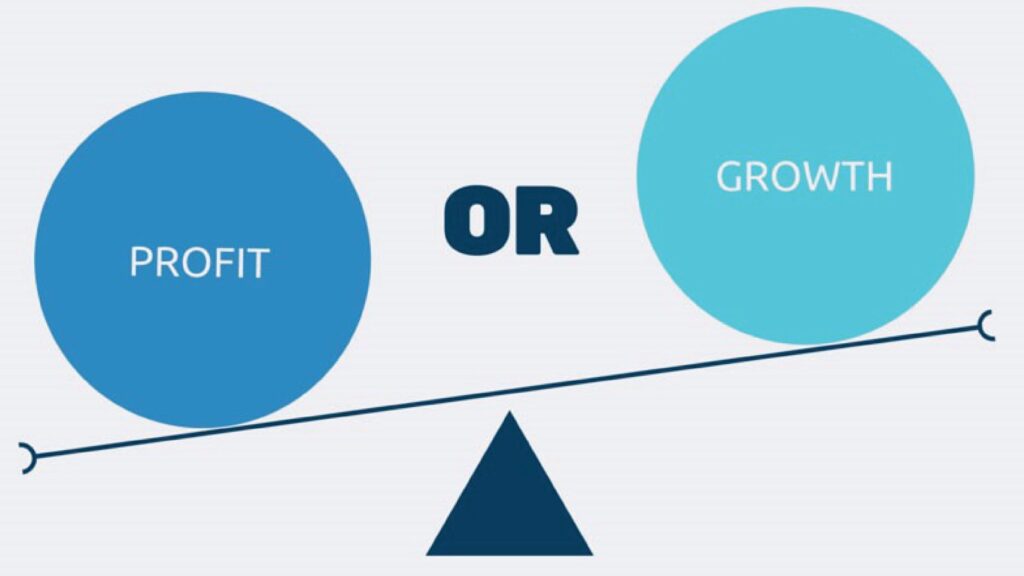Starting a yoga business from home can be a satisfying venture that requires a relatively low initial investment. The main idea behind starting a yoga class from home is that you can leverage your existing space to provide personalized yoga instruction, offering convenient and affordable services to a niche market.
By setting up a dedicated area in your home, such as a spare room or garage, you can create a peaceful environment that is conducive to yoga practice. This setup not only minimizes overhead costs, but also provides a flexible schedule that can be tailored to your clients’ needs.
Table of Contents

Investing in the necessary equipment is also an important aspect of setting up your yoga business. While professional studios often have a variety of equipment, starting from home requires a minimalist approach. Basic items such as yoga mats, blocks, straps, and a comfortable space to practice are usually sufficient. You can also invest in a few props and accessories to improve the experience, but keeping the investment to a minimum will ensure you stay within your budget.
1. Starting a Yoga Business: Certification, Planning, and Promotion Steps
The first step to start a yoga business is to get a yoga certification. This certification will validate your yoga knowledge and skills, making your potential clients trust your yoga business. To get a yoga certification, you can enroll in an accredited yoga teacher training program. Such programs are usually 2 to 3 months in duration and provide you with in-depth training in various yoga postures, pranayama, and meditation techniques.

After getting yoga teacher training, you need to plan your yoga class. This includes the location, timing, and fee structure of your class. Creating a professional and comfortable environment is extremely important as it will create the first impression of your clients. Select a suitable location that is clean, quiet, and conducive to the practice of yoga.
Promotion and marketing also play an important role in running a yoga business successfully. You can promote your yoga class information through social media, local advertisements, and website. You can also offer a free trial class or discount offer to attract potential customers.
Apart from this, as a professional yoga teacher, it is also important to have good communication and understanding with your students. This will not only contribute to the success of your business but also help establish a stable and positive relationship between you and your students.
Finally, getting certified, making a good plan, and effective promotion are important to start a yoga class business. Your dedication and hard work towards yoga methods and teaching will make your business successful.
2. Choosing the Right Location for Yoga Business: Shop vs Home
An important decision for starting a yoga business is the type of space you will choose. For this, renting a large space can be a good option as Yoga Business usually demand space. A large space will help accommodate the size and number of your class, allowing you to train the maximum number of people and meet their needs for a comfortable yoga practice.

When you choose a large space to rent, you can have two main options: a large shop or a house. Choosing a large shop will give you a business environment, which will help keep your business’s image professional. Also, a shop is usually located in busy business areas, which can help reach more people.
On the other hand, if you choose a house to rent, it can usually be less expensive and provide you with a more private and comfortable environment. A house can be suitably designed for yoga classes, such as converting an extra room into a yoga studio. However, you must ensure that the location and facility of the house is suitable for business activities and is easily accessible to your target customers.
Ultimately, your choice of location will depend on your business objectives, budget and convenience of target customers. Choosing the right location will be crucial for the successful operation and expansion of your Yoga Business.
3. Maximizing Local and Online Promotion for Your Yoga Business: A Comprehensive Guide
To promote your Yoga Business locally, you must first create a solid and attractive promotional plan. It is important to ensure that your advertisement reaches the local community effectively and people can easily find information about your class. For this, you can use various means in your local area. Write the details of your yoga class such as timing, location, fees, and class features clearly and post it in local newspapers, community bulletin boards, and fitness centers. If there are any health and fitness fairs or events in your area, you can reach out to people directly by participating in them or setting up a stall.

For promotion on the Internet, making effective use of social media can be a great way. Post regular updates on platforms like Facebook, Instagram, and Twitter. You can share short videos related to yoga, tips, and class information. Include the class atmosphere, your teaching style, and student feedback in these videos so that potential students get a real glimpse of your yoga class.
You can also have a website or blog where you can provide detailed information about your Yoga Business. Have a ‘sign up’ form on the website where people can register for your classes or get more information. Write regular blog posts that include yoga benefits, tips, and unique features of your classes.
Additionally, share video content on YouTube, where you can upload videos on yoga postures, meditation techniques, and fitness tips. This will not only increase the reach of your classes, but also help you emerge as an expert. Include the videos with the methods of the yoga postures you teach, the benefits, and feedback from students who have seen improvements in your classes.
In these ways, you can effectively promote your yoga classes locally and online, which will increase the popularity of your classes and make more and more people avail your services.
4. Grow Your Yoga Business: Growing Success with the Power of Free Classes
Offering free classes can be a very effective strategy to take your yoga business to new heights of success. The purpose of this offer is to introduce potential customers to the quality and benefits of your yoga classes. When people experience your class once for free, they will understand the quality of your service and yoga methods, which will also motivate them to attend your classes regularly in the future.
An important benefit of free classes is that it increases the popularity of your classes and also makes your marketing job easier. Potential customers, who were previously unaware or skeptical about your services, can now experience your class without any financial risk. This is an opportunity for your business to showcase the expertise of your yoga instructors and the class atmosphere, which will increase people’s trust and interest.
Also, by offering free classes, you can also add variety to your classes, such as showcasing different types of yoga (Hatha Yoga, Vinyasa, etc.). This will help customers understand how many yoga methods you have and what type of yoga they like the most. It will also act as a market research for your classes, allowing you to further improve your services.
Offering free classes also helps get customer reviews and feedback, which is important for improving your business. If people are satisfied with your classes, they will not only sign up for regular classes but will also recommend your classes to their friends and family. This word-of-mouth marketing can be a highly effective tool for your business.
5. Success in Yoga: Personalized Plans, Welcoming Spaces, and Quality Equipment
If you want to grow your yoga business and expect good profits in it, the first thing you need to do is create a great personalized yoga plan. This plan will be designed according to the individual needs of your clients and their fitness goals.
While designing personalized yoga plans, you need to understand that every person’s physical condition, health problems, and fitness goals differ. For example, some people may need to lose weight, while others may want to focus on flexibility and mental peace. This type of customized program will not only enhance the quality of your service but will also keep your clients engaged for a long time.

While creating a personalized yoga plan, you need to communicate deeply with your clients so that you can properly understand their needs and goals. This process will help in selecting yoga postures, pranayama, and meditation methods keeping in mind a person’s fitness preferences, their health condition, and their personal goals. Apart from this, you have to regularly monitor their progress and make changes in their program from time to time to serve them better.
Additionally, it is important to decorate your yoga class space well. A pleasant and inspiring atmosphere can enhance the experience of clients. Your yoga studio decor can include light colors, comfortable furniture, and natural elements such as plants. It is important to ensure that the space is clean, calm, and has a relaxing atmosphere. Appropriate lighting and comfortable floor coverings are also important, which can provide a feeling of ease and enjoyment during yoga practice.
In addition, it is also important to pay attention to the quality of equipment and accessories in the yoga studio. Using the right yoga mats, blocks, stretching belts, and meditation facilities will provide a professional and comfortable experience for your clients. Additionally, your studio should also have a welcome area and relaxation facilities for clients to make them feel special and welcome.
By taking care of all these aspects, you will not only be able to provide a great yoga experience to your clients but also grow your business successfully. The right planning, appropriate decor, and high-quality services will be the key to lasting success for your yoga business.
Thus, offering free classes will not only help in increasing the reach and popularity of your business but it will also help in showcasing the quality of your services and building a strong relationship with customers.
6. Yoga Business Set Up: Budget Breakdown and Cost Estimates
To set up your yoga business, you need to estimate a cost of around Rs 20,000 to Rs 50,000. This cost will include various important aspects, such as rent space, decoration, and other necessary materials.
In the first step, you need to look for a suitable place where you can run your yoga class. This space will have to be rented, and its rent will depend on your budget. If you rent a small room or space, then its cost can be less, but if you are looking for a bigger or good space, then its rent can be high. Generally, this expense can be kept between Rs 10,000 to Rs 30,000.

In the second step, the space will need to be decorated properly so that it is attractive and comfortable. For this, you will need yoga mats, cushions, dim lighting, and decorations. Along with this, you will also need colorful walls, beautiful curtains, and other decorative items to make your class look more professional. The cost involved may range from around Rs 5,000 to Rs 15,000.
In addition, there will be some other expenses such as yoga equipment, such as yoga mats, blocks, straps, and balance balls. You may have to spend Rs 5,000 to Rs 10,000 to purchase these items. Thus, overall, you should estimate a cost of Rs 20,000 to Rs 50,000 to start your yoga class, which will include the rent of the place, decoration, and the necessary yoga equipment.
With this budget, you can give your yoga class business a solid start and provide a good service to the clients. It is important that you manage the budget properly and pay attention to all the necessary elements so that your business can be successful.
7. How to earn ₹50,000 to ₹60,000 monthly from your yoga class business: Key strategies for success
To earn ₹50,000 to ₹60,000 a month from your yoga business, you need to focus on a few important aspects. First, it is essential to create a strong and engaging yoga class program that suits different age groups and levels of yoga practitioners. A good program can include yoga postures and techniques from beginner to expert level, so that everyone can progress their fitness journey at their own pace.

Promotion and marketing is also extremely important. You can increase the reach of your yoga class by using various marketing strategies like social media, local advertising, and word-of-mouth. It can also be beneficial to create an attractive and professional website where potential clients can find your program information, schedule, and fee details. Also, adding an online yoga class option can be a good move, so you can reach more clients and broaden your service.
It is also important to take care of customer service. A good customer experience not only satisfies your existing customers but also helps in attracting new ones. High quality teaching and personal attention in yoga classes will keep customers happy with your services and will make them recommend your classes to others.
The fee structure is also important to take into consideration. Setting fair and competitive fees for your classes will ensure the sustainability of your business. You can also offer membership plans and special offers such as discounts and pack deals, which can motivate customers to continue your services for a longer period of time.
Finally, the choice of the location of the yoga class is also important. Conducting classes in an accessible and attractive location that is easily accessible will contribute to the success of your business. The location and amenities of the place, such as adequate parking, cleanliness, and a comfortable atmosphere, will help in attracting your customers.
Keeping all these aspects in mind, you can earn an income of ₹50,000 to ₹60,000 per month in your yoga class business and also lead your business towards continuous growth.
Conclusion
Starting a yoga business from home is an excellent way to combine your passion for yoga with a practical business initiative. By utilizing your existing space, you can create a peaceful environment that reduces your expenses and allows for personalized instruction tailored to your clients’ needs. With flexible schedules and minimal initial investment in basic equipment like yoga mats, blocks, and straps, you can provide affordable and accessible services for your specific market. This approach not only reduces costs but allows you to focus on delivering a high-quality, personalized yoga experience.
If u want to Watch the Video You can visit to our You tube Businovations Channel and watch the video……
Click the link to read the Recent Posts…
How to Start a Business at home in 20,000 to 40,000


4 thoughts on “Opening a Yoga Business:Essential Steps and Strategies(108)”